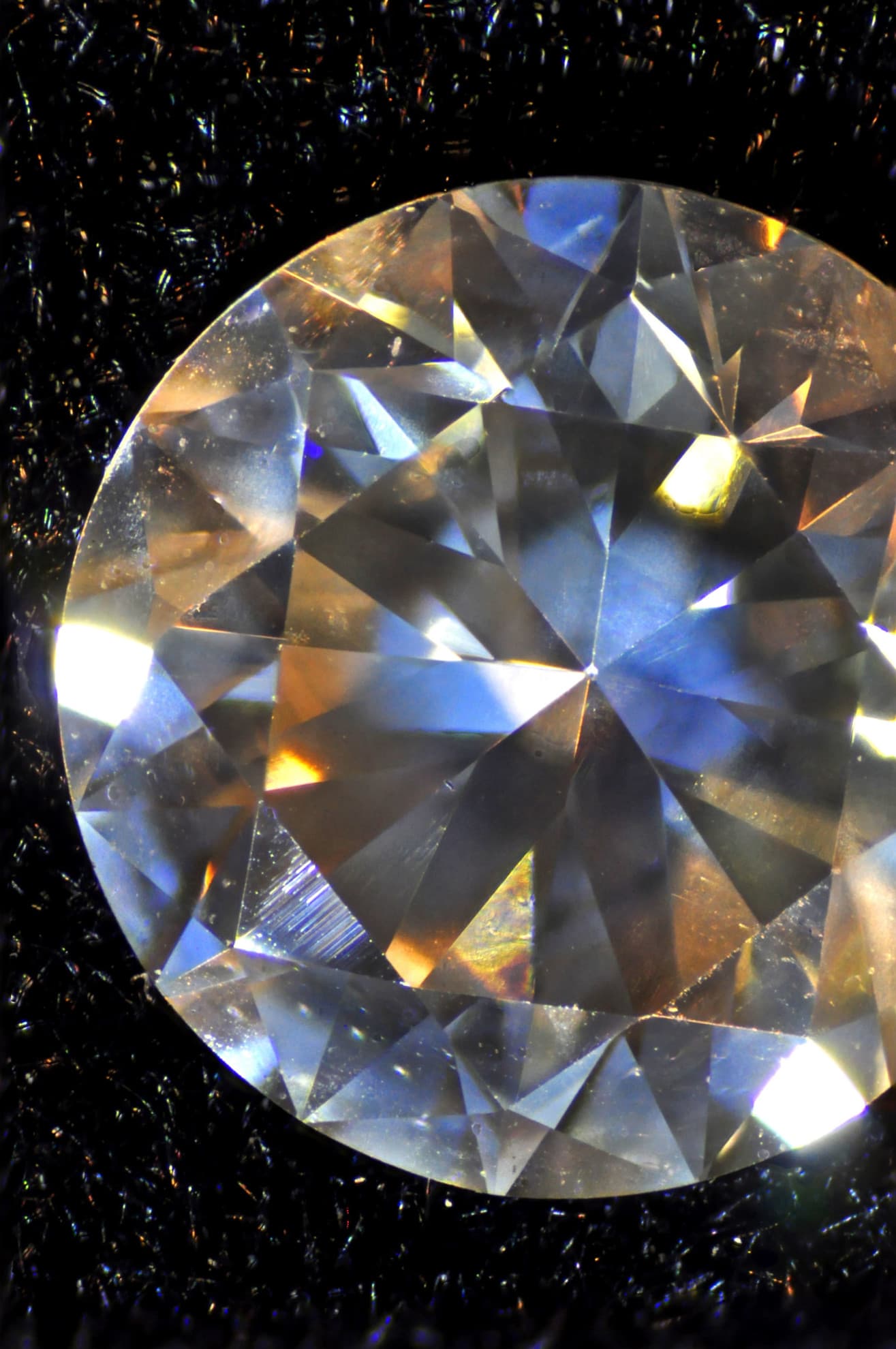Diamond Look-alike Comparison Chart
Distinguishing a diamond look-alike from the real thing can challenge new gemologists. However, specific gravity and birefringence hold the key to simple separations.
1 Minute Read
Separating a diamond look-alike from the real thing is one of the biggest challenges a new gemologist faces. Diamonds and their simulants can share some optical and physical properties. However, two properties, specific gravity and birefringence, hold the key to distinguishing diamonds.
In the chart below, you'll find common diamond look-alike stones and real diamonds arranged by specific gravity.
Please note, only three pairs of adjacent stones have overlapping specific gravity values, the ones in red. However, in each case, only one out of the pair is doubly refractive.
So, this makes the separations simple.
Diamond and Diamond Look-alike Gems Arranged by Specific Gravity
| Material | SG high | SG low | Birefringence |
| Gadolinium Gallium Garnet (GGG) | 7.09 | 6.95 | None |
| Cubic Zirconia | 6.00 | 5.34 | none |
| Rutile | 5.60 | 4.20 | .287 |
| Zircon | 4.80 | 3.90 | .000 - .059 |
| Yttrium Aluminum Garnet (YAG) | 4.60 | 4.50 | None |
| Sphene | 3.55 | 3.45 | .100 - .192 |
| Diamond | 3.53 | 3.51 | None |
| Moissanite | 3.20 | 3.17 | .043 |
Notes
Occasionally, zircon can have an isometric crystal system. Therefore, it could be singly refractive. Seemingly, this would mean it could be confused with yttrium aluminum garnet (YAG). However, anytime zircon becomes singly refractive, its specific gravity drops below that of YAG.
Moissanite also exhibits thermoluminescence. This is a type of luminescence induced by heat, which diamonds lack. By gradually heating moissanite, you can make it change color. At around 150° Fahrenheit, it starts turning light brown. As the heat increases, it becomes bright yellow or green. Of course, you must do this very gradually. Since a rapid temperature change could damage some of the other stones, use this test judiciously.
Donald Clark, CSM IMG
Related Articles
Diamond Value, Price, and Jewelry Information
Distinguishing Diamonds: Educating Your Eyes
An Introduction to Conflict Diamonds and the Kimberley Process
Can Blockchain Diamonds Solve Ethical Sourcing and Grading Issues?
Never Stop Learning
When you join the IGS community, you get trusted diamond & gemstone information when you need it.
Get Gemology Insights
Get started with the International Gem Society’s free guide to gemstone identification. Join our weekly newsletter & get a free copy of the Gem ID Checklist!
